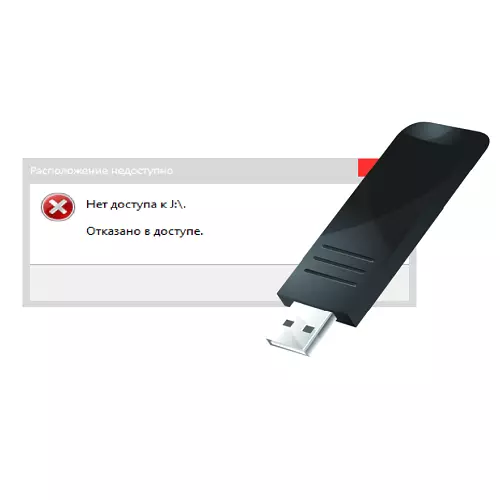
Unfortunately, USB carriers are not protected from failures. Sometimes there is a situation when, with the next handling of the flash drive, the system refuses access. This means that the message appears in which the following is written: "denied access". Consider the causes of this problem and how to solve it.
Fixing errors with failure to access flash drive
If a message "denied access" appears when accessing a flash drive, then you need to deal with the reason that, in turn, may be as follows:- restrictions on the rights of the operating system;
- Software problems;
- infection with viruses;
- Physical damage to the carrier.
Method 1: Use of operating system tools
The cause of the problem can be wounded in the restrictions on the side of the operating system. The fact is that many firms, in order to protect information, set up operating systems at workplaces so that they have ban on using USB devices. To do this, the administrator of the system makes the appropriate settings in the registry or group policy.
If the drive is working normally on the home computer, and in the other place there is a message about the refusal of access, then the reason may be caused by special restrictions on the operating system. Then you should contact the system administrator in the office, where you work so that he removes all restrictions.
The first thing to be done is to check access to the flash drive. This task is performed as follows:
- Go to "This computer".
- Right-click on the flash drive icon.
- Select "Properties" in the menu that appears.
- Click the Safety tab in the window that opens.
- Go to the "Groups or Users" section and select your name.
- Check the permissions and adjust them as needed. If there are some restrictions, remove them.
- Click the "OK" button.
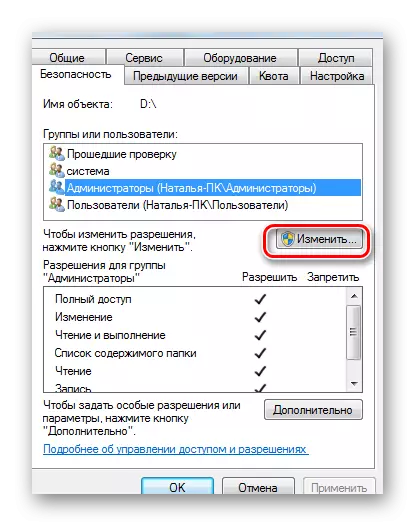
To make changes to permission, you must log in to the administrator's rights.
You should also check the registry settings:
- Go to OS registry. To do this, in the lower left corner, click "Start", become an empty field "Find programs and files" or open the window using the key combination "Win" + "R". Enter the name "Regedit" and press "ENTER".
- When the registry editor opened, passed successively at the specified branch:
HKEY_CURRENT_USER-> Software-> Microsoft-> Windows-> CurrentVersion -> Explorer_MountPoints2-> [Drive Letter]
- Open the Shell subdirectory and delete it. To do this, press the DELETE button on the keyboard. If the virus replaced the original file of the flash drive file, then with the removal of this partition, the path to the boot file of the drive will be corrected.
- After rebooting the system, try to open the media. If it opened, then find the hidden autorun.exe file on it and remove it.
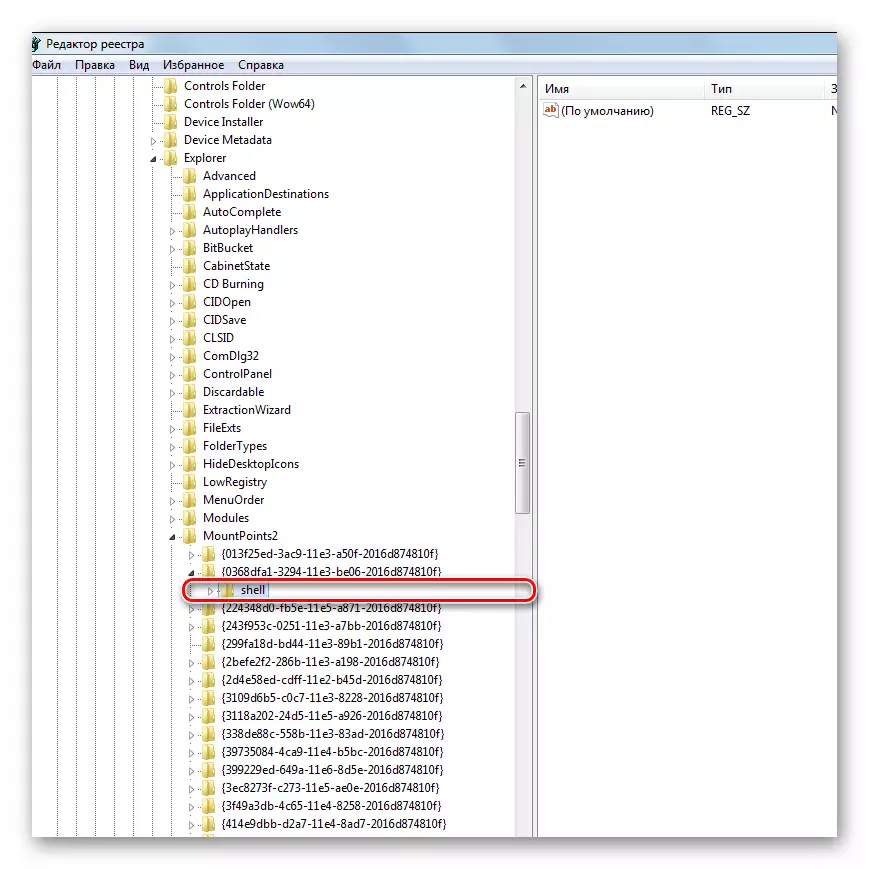
To display hidden files in Windows 7, do this:
- Complete this way:
"Control Panel" - "Design and Personalization" - "folder parameters" - "Show hidden files and folders"
- Select the View tab.
- Mark the item "Show hidden files and folders".
- Click "Apply".
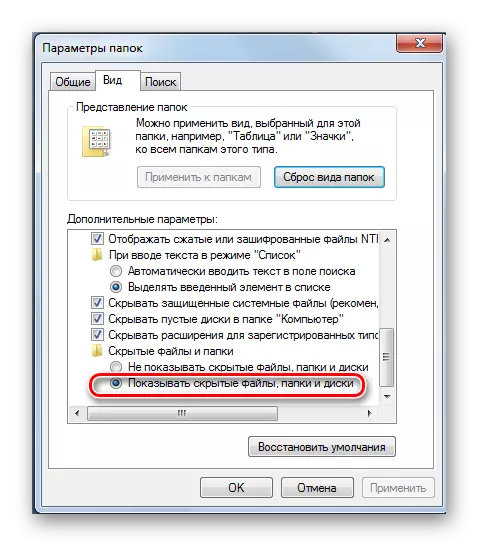
In other systems, all the actions described above should help display all hidden files automatically. If such a file was present on the flash drive, it means that it was infected with the virus.
See also: Instead of folders and files on the flash drive, labels appeared: solving the problem
Method 2: Removing viruses
The reason for the appearance of the above message may wage in the infection of the virus. The autorun virus is considered the most common for USB drives, which has already been mentioned above. It replaces the standard Windows service that is responsible for connecting media and choosing actions with it. A hidden autorun.inf file appears on the flash drive, which blocks access. How to remove it, we have already spoken. But this is not the only virus that may be present on removable drives.
Therefore, be sure to check the flash drive for the presence of a good antivirus program - spend the full scanning of the operating system. To do this, it is better to use an in-depth analysis. For example, in Avast it looks like shown in the photo below.
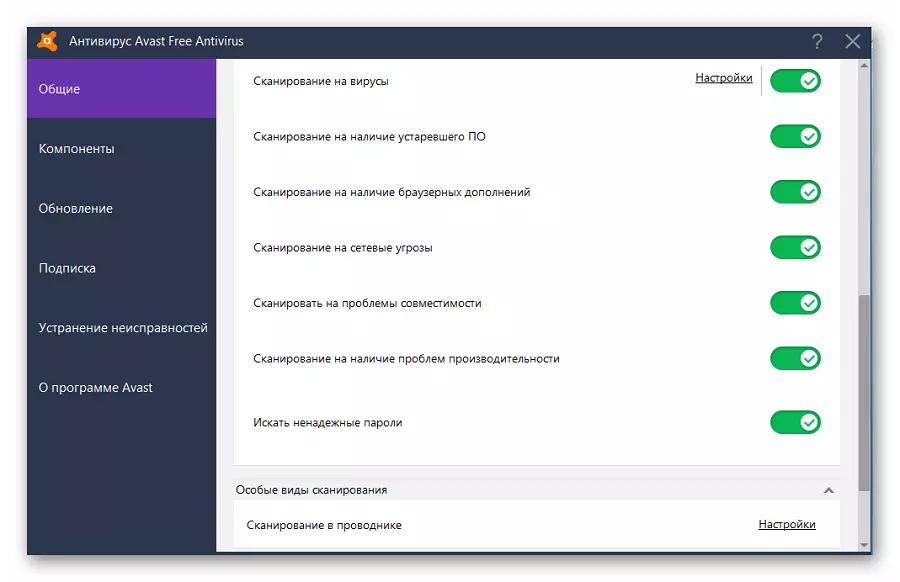
The most correct option will be the use of independent antivirus software from another media, for example Kaspersky Rescue Disk 10.
Dr.Web Cureit is also very popular. To create a boot disk or flash drive, you can use Dr.Web LiveDisk.
This software starts before Windows downloads and checks the system for viruses and threats.
See also: Tips for the correct selection of flash drives
Method 3: Restore information and formatting
If the specified methods did not give the result, you can try format the flash drive, but at the same time the information on it will be lost. The fact is that the reason may wage in software problems.
Also, an error of access to a flash drive may appear in case of failures in the operating system or improper operation of the drive - for example, it was extracted during recording. In this case, the integrity of the boot file is violated. Restore the performance of such a flash drive can be using a special software or access to the service center.
Also, the reason may be in hardware problems. To eliminate this option, make this:
- Block flash drive can be installed on the computer antivirus program. Try to disable it for a while and check access to the drive.
- If the problem is in this, see the settings of the antivirus program - may have some restrictions that relate to removable drives.
- Try to open a media via another USB port, you can accommodate the connector on the computer.
- Try checking the flash drive performance on another computer.
- Inspect the accumulator attentively for its physical condition - it is possible that it is slightly bent or loose connector.
- In addition to external damage, the controller or memory microcircuit may exit. In this case, the service service is needed.
In any case, if a software failure or files occurred on the flash drive or files are damaged due to the virus, you should use the file recovery tool, and then format the carrier. The first can be done using a special R-Studio utility. It is designed to restore information at file failure files.
- Run the R-Studio program.
- The main window of the program reminds the "Explorer" menu in Windows. On the left there are media and partitions, and on the right list of files and folders in the section. Put the mouse cursor to the left of the USB flash drive.
- On the right will be information with the contents of the carrier. Deleted folders and files will be marked with a crossed red cross.
- Put the cursor to the file being recovered and press the right mouse button.
- Select the "Restore" menu item.
- In the window that appears, specify the path where you save information.
- Click the "Yes" button in the window that appears.
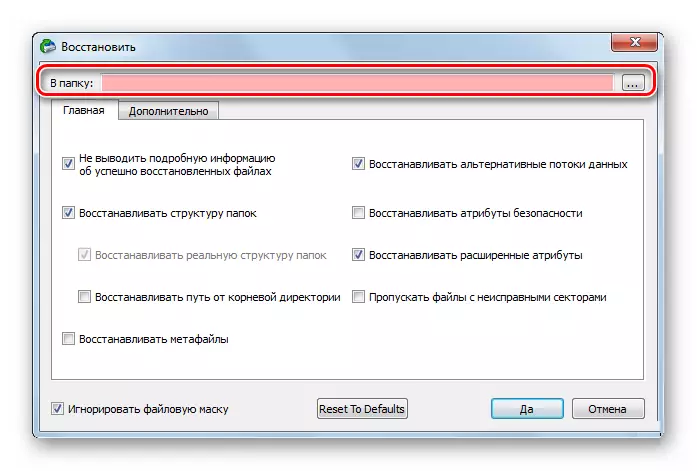
And formatting is as follows:
- Go to "This computer".
- Right-click on the flash drive icon.
- Select item "Format".
- In the window that opens, select the type of file system and click the Start button.
- At the end of the process, the flash drive is ready for use. Therefore, just wait until the system finishes doing your job.
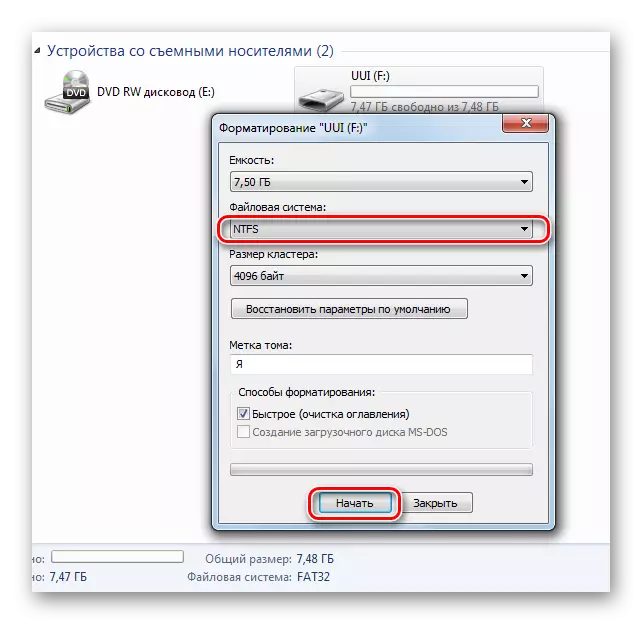
If the usual formatting of the USB carrier does not help, you need to perform low-level formatting. To perform this procedure, use a specialized software, such as Hard Disk Low Level Format Tool. Also, our instruction will also help to fulfill the task.
Lesson: How to perform low-level formatting flash drive
As you can see, if you set the cause of the error and choose the most suitable action to your situation, the problem with the message "denied access" will be solved. If you can't do any of the steps described above, write about it in the comments, we will help you!
